|
|
|
|
|
|
 |
|
(World War II) North Platte Christmas Card |
|
|
|
|
|
|
| MILGEN.HTM |
|
Honors! Table of Contents |
|
Feedback |
|
|
|
|
|
|
 |
|
(World War II) North Platte Christmas Card |
|
|
|
|
|
|
| Click for larger
image of Christmas Card
From Back of Card: A Union Pacific Railroad Mountain-type steam locomotive arrives with the first section of the eastbound "Pacific Limited" at North Platte, Nebraska. The station housed the famous North Platte Canteen where volunteers served more than six million members of the armed forces during World War II. The site is now the location of a Union Pacific Historical Marker and mini-park. Original painting by John Bromley (Rail History Prints)
THE CANTEEN - A PICTORIAL HISTORY The memorial is located at the junction of Front Street and Bailey. This picture was taken facing due north with the grain elevators in the background. What was visible from here was the “front” of the depot (i.e. the south side) while the trains arrived on the north side." (from North Platte memorial website) The following information was copied
from the North Platte Canteen Memorial website
|
| "The numbers are staggering! Over the
course of 51 months, almost 55,000 volunteers from nearly 125 communities
served 6,000,000 service men and women. Day in, day out, from early in
the morning until the last train would leave at night, between 2,000 and
5,000 soldiers and sailors would be fed nearly 200 loaves of bread, 100
pounds of meat, 50 pounds of coffee, two gross of rolls, and over 100 quarts
of milk.
More than 300 organizations made sandwiches, boiled eggs, fried chickens, and baked cakes, pies, and cookies. Tens of thousands of magazines eased the boredom. War wounded were provided with razors, canes, tooth brushes, and care baskets to make their return home a welcome one. Having served more than six million members of the armed forces during its 54 months of operations, the sign of the world-famous Service Men’s Canteen in the Union Pacific Railroad station at North Platte was taken down on April 1, 1946 and the canteen doors locked. Servicemen
from all over the world wrote thousands of letter of thanks to the
women operating the Canteen which was supported by North Platte Groups,
by 125 Nebraska and Colorado communities and the Union Pacific Railroad."
Once upon a Town: The Miracle of the North Platte Canteen by Bob Greene Book Review |
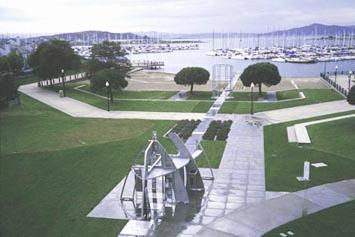
| An estimated 18 million women worked
in WWII defense industries and support services including steel mills,
foundries, lumber mills, aircraft factories, offices, hospitals and daycare
centers.
The Rosie the Riveter Memorial Honoring American Women's Labor During WWII, is the first national monument to celebrate and interpret women's crucial contributions to the World War Two Home Front. Located in Richmond, CA, in the Rosie
the Riveter Memorial Park at the site of the former Kaiser Shipyards,
which were the largest and most productive of World War II.
|
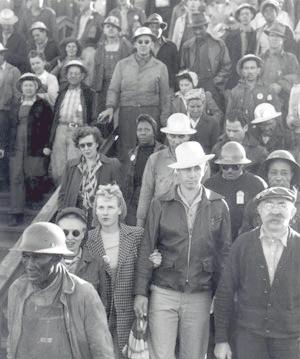
|
in the Saturday Evening Post on February 3, 1945 (Copied from the Rosie The Riveter website) Welder
Slowly upon the ways the
gray ships rise,
Over the hulls, between
the clanging cranes,
The chattering rivets
button up the shell,
Irene Carlisle was a welder at Moore
Shipyard in
|
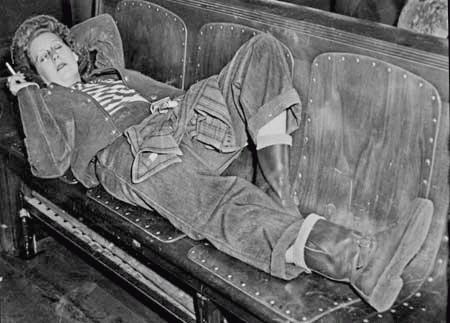
|
The following was copied from the US ARMY, ABERDEEN PROVING GROUND (Now defunct) website (The two colored images were substitured. They are from other internet sources) |
||
|
||
| "Daddy, what did you do in the war?"
was a popular question for soldiers coming back from our nation's battles,
but World War II added a whole new concept - "Mommy, what did you do in
the war?"
Rose Will Monroe probably best represented the new way of life whereby the women who raised the post World War II baby boom generation also provided most of the labor for producing the materiels of the war. Monroe, who died on May 31, 1997 in Clarksdale, Ind., became famous as "Rosie the Riveter." Norman Rockwell depicted her for the Saturday Evening Post and she became famous as a war bond promoter, as well as a poster girl flexing her muscles while wearing a Women Ordnance Worker (WOW) bandanna. |
||
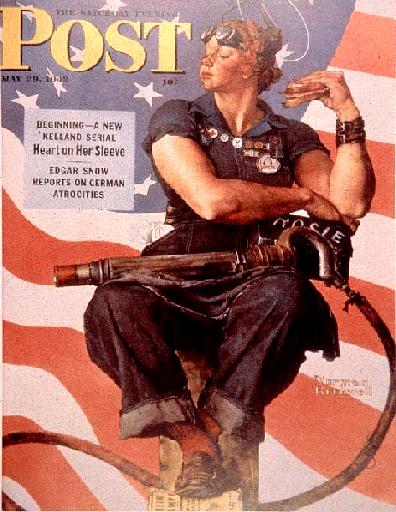 |
||
|
|
||
| But Rosie was not just another poster girl. She was the real thing. She was working as a riveter building B-29 and B-24 airplanes at the Willow Run Aircraft Factory in Ypsilanti, Mich., when she was discovered" by Walter Pidgeon, the actor. Because she fit the image of the Kay Kyser hit song, "Rosie the Riveter", she was selected to appear in a short film that promoted war bonds throughout the nation's theaters. | ||
|
|
||
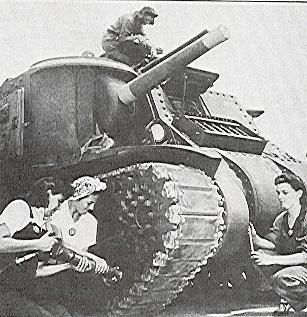
|
||
| After Japan bombed Pearl Harbor the
young men of America poured out of the factories and offices to line up
at the recruiting offices. The young women of America lined up at the factories
and arsenals to fill the traditional male jobs left vacant by those who
went off to fight.
Those who were involved in the production of military hardware became known as WOWs which stood for Women Ordnance Workers. These women, symbolized by Rosie the Riveter, wore hardhats and coveralls, and pulled the same load as many of the men they replaced. They operated heavy cranes, milling machines, and countless other heavy tools that most women had never heard of before the war. The WOWs also bagged gunpowder, made weapons, crated ammunition and did whatever else was asked of them so that their fathers, husbands, sons, and sweethearts could win the war and come back home again. The "Rosie the Riveter" movement is credited with helping push the number of working women to 20,000,000 during four years of war, a 57 percent jump from 1940. About 300,000 women were employed in War Department activities in November 1943. The WOW bandanna became a well-known symbol of the 85,000 women who worked directly for the Ordnance Department. In fact, an advertisement in the July-August 1943 issue of Army Ordnance, noted: "... and she wears the WOW bandanna. Water Repellent. Washable. Dust Proof. The "WOW" Bandanna, designed in accordance with U.S. Army specification, is an attractive, safe, and unifying head covering to identify Women Ordnance Workers. About 27" square, it is available either in Ordnance red with white Ordnance insignia, or in white with red Ordnance insignia. Every woman in your plant will want one--it's a "WOW" for morale! $3.75 per dozen, net F.O.B., New York. Manufactured under authorization from the Army Ordnance Department. We invite your inquiry. BRIAN FABRICS CORPORATION, 1441 BROADWAY, NEW YORK CITY."The role of women in World War 11 did not end with temporarily replacing the men in civilian jobs. In 1942, Congress established the Women's Auxiliary Army Corps, or WAAC as it was known. Several hundred thousand women volunteered to "free a man to fight." They were issued uniforms, and replaced soldiers in clerical and other non-combat related jobs. The WAACs had no official military status until it was granted by Congress in 1943. When the WAACs officially became part of the Armed Forces, their name was changed to the Women's Army Corps (WAC). The WACs not only served as clerks, they also drove trucks, tested weapons, and ferried bombers and other aircraft across country and overseas. The more mechanically inclined repaired and maintained tanks and other tracked and wheeled vehicles. While it cannot be said that the jobs held by the WOWs and WACs were as dangerous as those of the combat soldiers, the simple fact is, that many of their jobs were more dangerous than the ones held by many of the men overseas. While many of the men were behind the lines serving the war effort as clerks, cooks, bakers, supply and maintenance personnel and staff officers of all types, many of the women were working in shifts around the clock bagging gunpowder and manufacturing artillery shells, and other high explosives. They suffered the effects of spray painting, welding, hanging from single suspension scaffolds and shooting hot rivets into the hulls of ships under construction, working with all kinds of dangerous chemicals, and many other equally hazardous jobs. While the risk of being killed or wounded by the enemy were nil, the risks of injury and death they faced were often equal to those faced by the men overseas. Many of the women pooled their efforts in raising their families. They formed into groups and shared such chores as cooking, cleaning and washing clothes. many who had young children shared apartments and houses so they could save time, money, utilities and food. If both worked, they worked different shifts so they could take turns babysitting. For many, this sharing and cooperation that was born out of the demands placed on the women of World War II created life-long bonds among them. Life on the home front brought special challenges as they coped with rationing and shortages. Clothes, many food items and a host of other commodities were scarce. Tires and gasoline were rationed, as were meat, shoes, and anything made of metal. On top of that, those with children were constantly worried about their little ones getting sick. Illnesses that were readily treatable during normal times, often became serious because of the medical shortages. Antibiotics such as penicillin were particularly scarce. But they continued to work. And through their efforts support for the soldiers never lagged and they contributed to the victory in the "war to end all wars." And they changed the workplace forever. |
||
|
The Aberdeen proving ground web-link was sourced out by Roy Ator LT USN/Ret) |
||
|
||
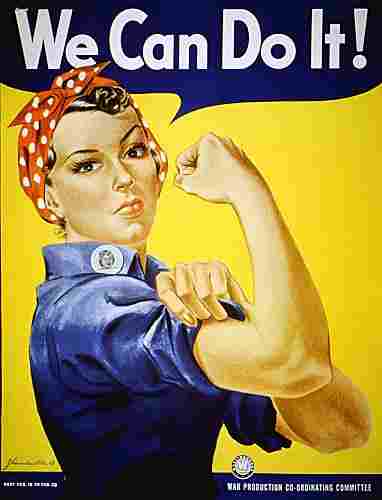 |
||
|
|
||
|
|
||
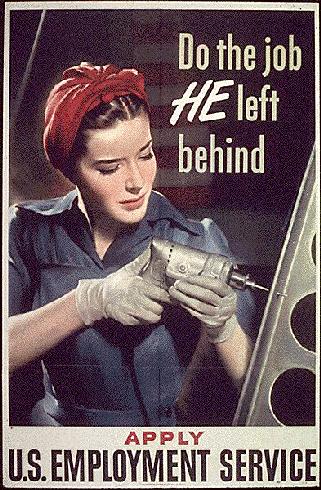 |
||
|
|
||
|
|
||
|
|